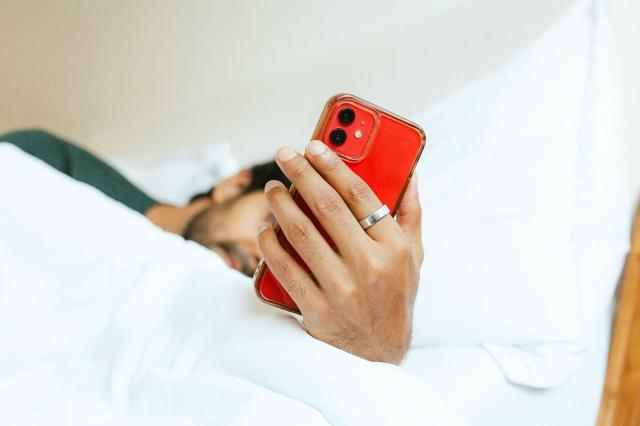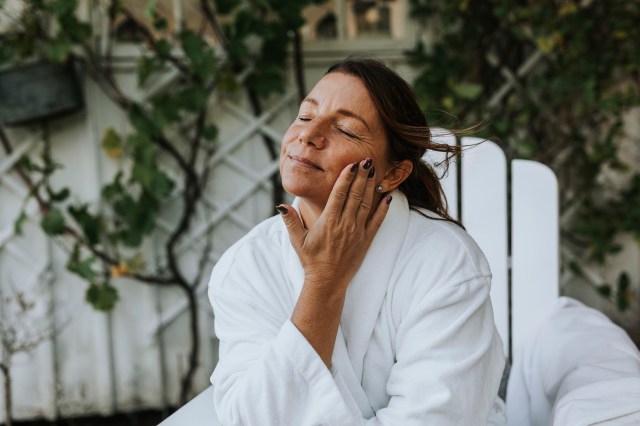Plenty of us have our heads buried in our phones these days, whether scrolling through social media, browsing aimlessly on Amazon, or spending hours playing Candy Crush. It seems no one is immune. We use our phones for everything. But what happens when we become addicted to them?
We can’t completely cut phones out of our lives, because we need them for professional and personal communication, so it’s unreasonable to tell someone to “just shut it off.” Sure, we can say we’re going to “limit social media time to X hours a day” or “turn off the phone at eight o’clock every night,” but to actually implement these goals is difficult. Instead, there are a few realistic steps to reduce screen time and cultivate a healthy relationship with your phone.
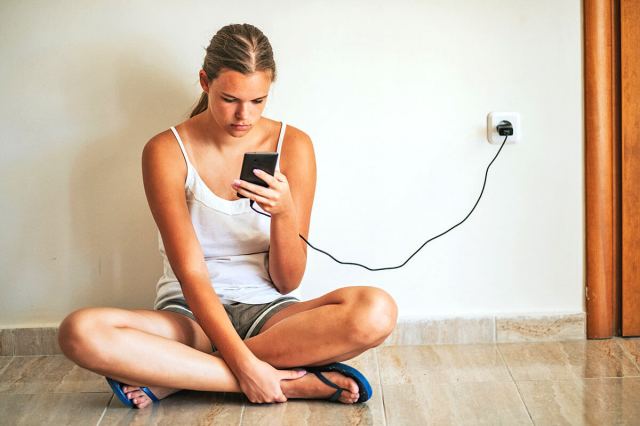
What Is a Phone Addiction?
Cell phone apps were designed to be addictive. Former Google design ethicist Tristan Harris points out that some features, such as “pull to refresh,” intentionally mimic slot machines and other addictive casino games. It keeps users wanting more. Even if you manage to ignore these psychological cravings and put the phone down, the break probably doesn’t last long. “If you disengage, you get peppered with little messages or bonus offers to get your attention and pull you back in,” explains Natasha Schüll, author of Addiction by Design. It makes kicking the habit nearly impossible.
With the world at our fingertips, pulling away can be extremely difficult. The Addiction Center estimates that over six percent of the population has a phone addiction. Some signs of phone addiction include lying about smartphone use, getting up at night to check the phone, neglecting other duties, and getting irritated when phone use is interrupted. Overusing phones can disrupt our relationships, productivity, and mental health. Here’s how to reduce your screen time and prevent falling victim to a phone addiction.
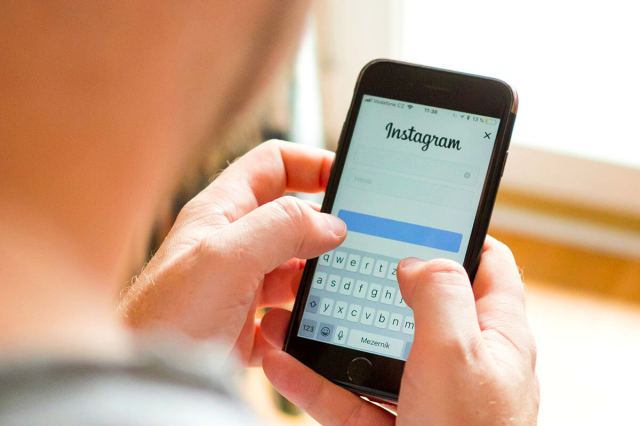
How to Kick the Social Media Habit — No, Really
It’s the most common complaint of phone overusers. Our brains love social media. Viewing our friends’ Facebook photos or watching funny TikToks activates the brain’s reward center as dopamine (a feel-good chemical) is released. Social media’s popularity shows no signs of slowing down — 69% of adults and 81% of teens use it. But curiously, we log in repeatedly, even if our last browsing session left us angry, irritated, or anxious. This is because, like gambling, the results of social media browsing are random, and we become addicted to the high points.
“When the outcome is unpredictable, the behavior is more likely to repeat. Think of a slot machine: if game players knew they never were going to get money by playing the game, then they never would play,” explains psychologist Jacqueline Sperling, PhD. She goes on to use image posting on social media as a comparable example to gambling. “One does not know how many likes a picture will get, who will ‘like’ the picture, and when the picture will receive likes. The unknown outcome and the possibility of a desired outcome can keep users engaged with the sites.”
Unfortunately, many of us stay connected with friends, family, and colleagues via these platforms, so simply deleting them isn’t easy. Instead, try turning off notifications. This way, you won’t be pinged whenever someone likes a photo, comments on your post, or adds you as a friend. The next step is to decide how often you’ll check your apps daily to reduce screen time further. Set a number and stick with it.
After a few weeks of practice, the urge to constantly check social media should subside, and you won’t be glued to every “ding” your phone makes. If this doesn’t work, delete social media apps from your phone but keep them on a less portable device, such as a tablet or computer. This way, you can still check your accounts, but you won’t have access to them 24/7. They do say absence makes the heart grow fonder.
Reader Favorites
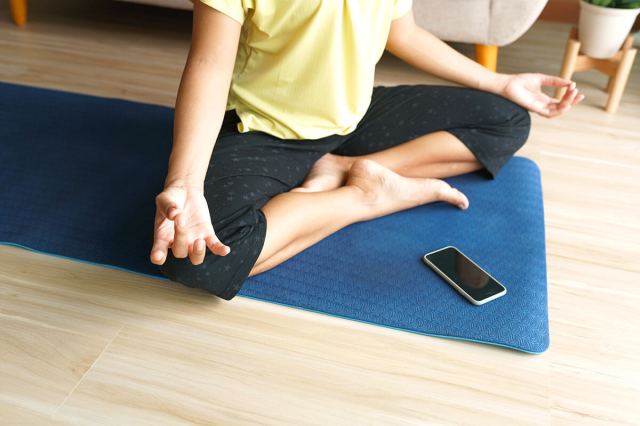
Replace Bad Phone Habits With Good Ones
Phones get a bad rap these days, but they aren’t the real problem; it’s how we use them. They can also be fantastic tools for learning and productivity. Replace your social media “doomscrolling” with something more fruitful to boost your mood instead of sinking it. Check out the app store (especially free apps) to exercise your brain. Learn a new language, enjoy guided meditation, read books, listen to music or podcasts, or play brain games like crossword puzzles or trivia. You’ll feel better about how you spend your time, and you’ll learn something new.
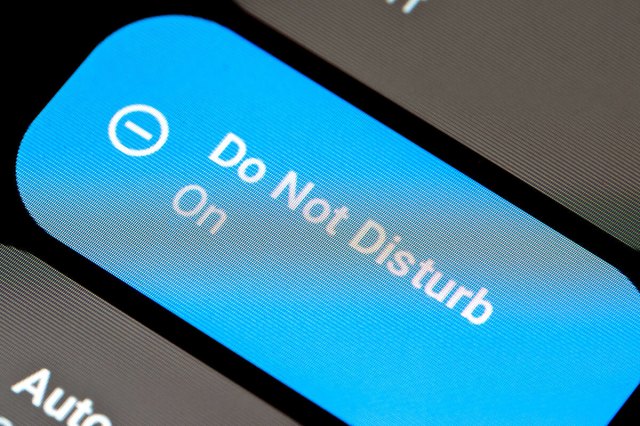
Put “Do Not Disturb” to Good Use
Social media notifications aren’t the only things popping up on phone screens during all hours of the day. Emails, group chats, news, text messages, and more bombard us even when it’s time to sleep. An underutilized tool is the “do not disturb” setting. It silences calls, alerts, and notifications without turning off cellular service in just a few taps. You can still use your phone but won’t be notified of incoming messages or calls until you turn the setting off.
On iPhone, this setting is a moon icon and can be set for one hour, “until this evening,” or “until I leave this location” (which comes in handy during business meetings or dinner dates). On an Android device, the icon looks like a circle with a horizontal line through it. You can also customize these settings by choosing the notifications you’ll still receive when it’s engaged. For example, head to an iPhone’s “do not disturb” settings and select “sleep focus.” You can then choose what people and apps are still allowed to notify you at night, and anyone or anything not selected will still be silenced. Parents love this setting because their kids can still contact them during an emergency, but annoying social media notifications or emails won’t disrupt their sleep.

Set Up Tech-Free Zones for a Digital Detox
This recommendation sounds scarier than it is. Being connected to everyone 24/7 is a perk and a pitfall of modern life, but sometimes, it’s best just to put the phone down. Indeed, it’s nearly impossible to turn your phone off the entire time you’re at home, so a more reasonable option is to assign a few phone-free (or even tech-free) rooms.
The best rooms to go tech-free are the bedroom, dining room, and family room. You’re enjoying downtime and spending time with loved ones in these spaces. This way, you can be fully present. According to the Cleveland Clinic, a digital detox such as this has several mental health benefits, including stress reduction and sharper focus, and it also improves our social interactions. And one more suggestion — invest in an alarm clock to keep your bedroom tech-free. This way, you’ll roll over in the mornings to turn off the alarm and not be tempted to check emails or social accounts immediately.
More From Our Network
Better Report is part of Inbox Studio, which publishes content that uplifts, informs, and inspires.
